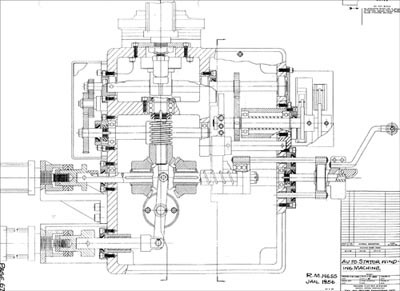Drawing
Since the beginning of time, drawings have been a way to share ideas with others. Being able to describe your idea verbally is important, but drawings are what allow you to show other people what's in your imagination. Words can only translate an idea to someone else's mind—and that allows for a new interpretation of what that idea may look like. You don't want your ideas to get lost in translation!
Now, like many, you may think that you can't draw. But you don't have to be an artist to be able to draw. Although it might seem intimidating, drawing is all about starting with the basics, and like anything else in life—practice, practice, practice! The purpose of design/engineering drawing is to communicate your ideas to other people in the simplest form possible. Your drawings don't need to be elaborate or fancy. They just need to get your ideas across to others through simple shapes and symbols. Start your drawing training by practicing the simplest of shapes. In your design notebook, draw lines, curves, circles, rectangles, squares, triangles, etc. Don't just draw one of each shape—draw dozens! You will be amazed at how much faster you get at drawing these simple shapes and symbols.
As silly as it may seem to practice drawing basic shapes—you are on your way to being able to draw everything that you see in your everyday life! You may not have noticed this before because you weren't looking, but all objects are made up of these basic shapes. Consider a house. To draw a house, you need a rectangle with a triangle above it. Draw windows and doors with more rectangles. Lines and curves allow you to add curtains, shutters, bricks, siding, etc. Basic shapes combine to make much more elaborate drawings.
Take your design notebook, and go look at the objects that surround you. Try to pull out the basic shapes within each object. Draw these basic shapes and then combine them with one another as you see them in real life. You will find that you are capable of drawing more complex objects.
Once you have spent time practicing simple doodles of everyday objects, you can begin trying more detailed drawings. When you add more detail, qualities like proportion become important for accurate drawings. To draw in proportion, consider how large certain aspects of your drawing are in comparison to others. A proportional drawing of house wouldn't have a door larger than the house itself!
For design/engineering drawings, it is always best to start drawing your ideas as thumbnails, small, doodle-like sketches of your ideas. During the ideation and brainstorm phase, you will have tons of ideas that you will want to sketch, so perfection is not important. You are sketching your ideas quickly and all in the same place (your design notebook) so that you can later go back and reference your ideas.
Once you have decided on a final design concept, go back and find the related sketches from your collection of thumbnails. Draw your final concept on a larger sheet of paper that you can use to present your idea to others. Combine the thumbnails that make up your final design. Be sure to add more detail to your final drawings, such as dials and knobs, all of the separate parts, color, texture, etc.
Check out this How to Draw Guide from HowToons for more details on design drawing!




